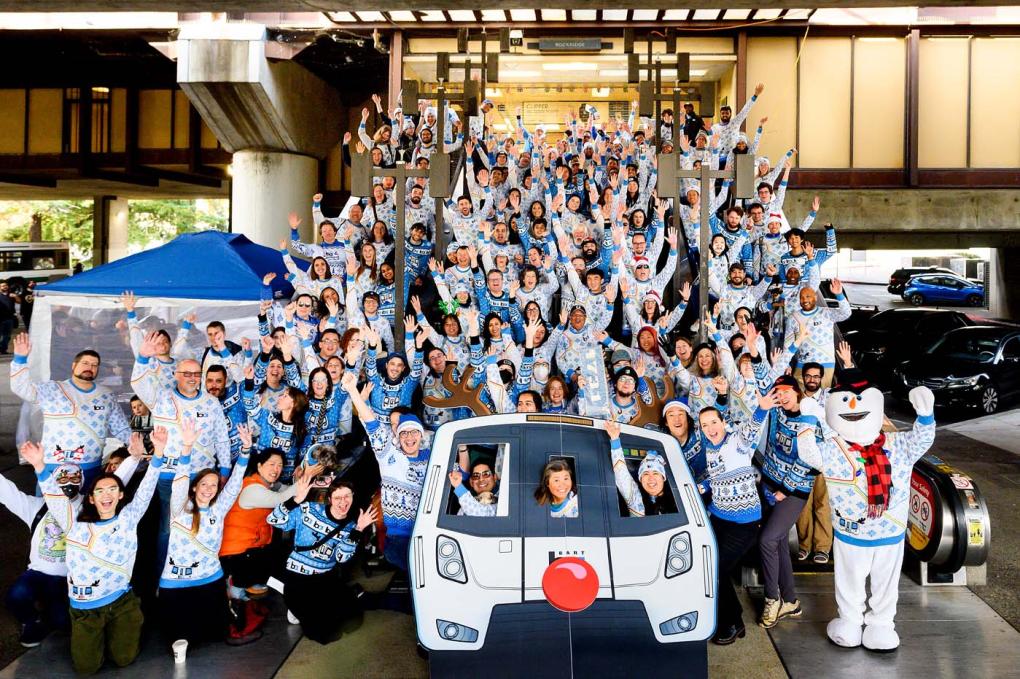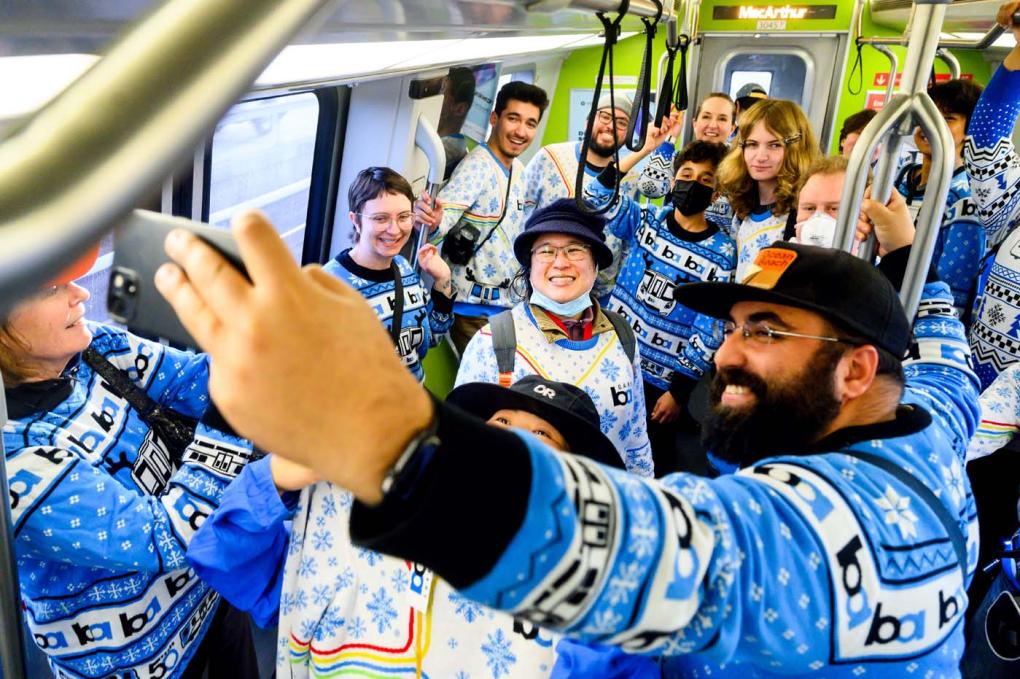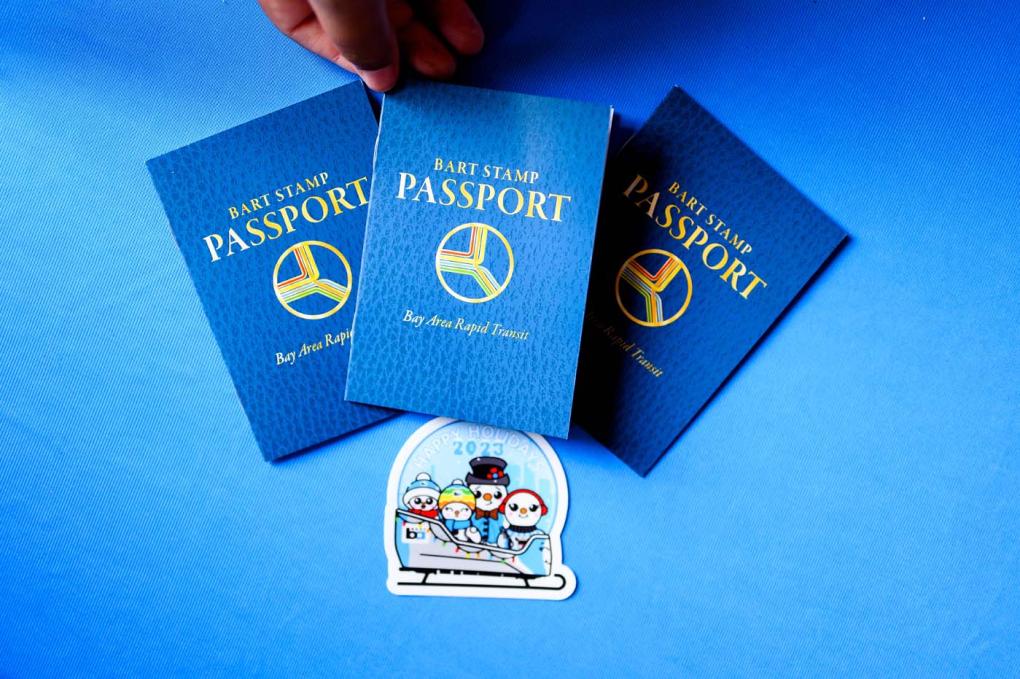
Transit Briefs: Cheyenne Passenger Rail Commission, BART
Written by Carolina Worrell, Senior Editor
BART photo
Cheyenne, Wyo., creates a formal commission to bring passenger rail back to the city. Also, Bay Area Rapid Transit (BART) will increase fares by 5.5% beginning Jan. 1, 2024, and rings in the holiday season with SweaterFest '23.
Cheyenne Passenger Rail Commission
On Dec. 11, Cheyenne announced that it will be taking steps to bring back passenger rail to the city, with connections to Denver and across the Front Range, through the creation of a formal commission, according to a Wyoming Tribune-Eagle report. Cheyenne hasn’t had passenger rail service since 1997.
According to the report, the Cheyenne Rail Commission, which is tasked with “leading the efforts to reintroduce passenger rail to the capital city,” is made up of eight government officials on the city, county and state levels, one Chamber leader and one Cheyenne citizen representative.
According to the Wyoming Tribune-Eagle report, talks of passenger rail in Colorado connecting Pueblo to Fort Collins via Denver are in “more advanced stages.” In the next year or two, Colorado residents will vote on whether they would support a tax to help fund this development. Cheyenne hopes to extend the northern terminal of the route to cross the state border into Wyoming, according to the report.
“We are definitely tied by economy to the Front Range, and a lot of people go north and south across the border for employment and for business,” said Greater Cheyenne Chamber of Commerce President and CEO and a member of the new commission Dale Steenbergen.
According to the report, the commission “hopes that the rail service would not only make transportation easier for commutes, but also increase tourism and lighten the traffic along I-25.”
In 2021, Colorado established the Front Range Passenger Rail (FRPR) District to oversee the development of the rail along the I-25 corridor between Wyoming and New Mexico. Steenbergen is the ex-officio member representing Wyoming on the board of FRPR.
“I pitched the idea to the mayor to get this going so that we had some organization in place,” said Jeff Noffsinger, Director of Cheyenne Metropolitan Planning Organization (MPO) and a member of the commission. “So that when the time comes next year to possibly seek some funding that we’ve got the political backing, as well as support from other organizations in our community.”
Noffsinger said “there would be some local funding, but he has hopes that it will largely be backed by federal money,” according to the Wyoming Tribune-Eagle report. Steenbergen has worked on seeking grant funding with FRPR before, and Noffsinger, who has been spearheading the project along with the MPO, said the commission “will turn to the bipartisan infrastructure law for financial support.”
According to the report, while Colorado is further along the process in talks to implement the rail, Noffsinger said he “hopes the Cheyenne connector can be installed simultaneously or put in place shortly after.”
“I want to make sure before the train leaves the station that we at least have the conversation to see how we can have a stronger voice at the table and how we can collaborate to see about getting that service extended on up in Cheyenne,” said Noffsinger, who added that he has had conversations with All Aboard Northwest, a group looking to reinstate the Pioneer passenger rail line from Chicago to Seattle via Cheyenne, according to the report.
“Bringing passenger rail back to Cheyenne would provide enormous benefits to our community,” Mayor Patrick Collins said in a news release. “Train service will make it easier to get up and down the Front Range and give us a major economic boost.”
The Cheyenne Passenger Rail Commission will hold its first meeting on Dec. 15, where members will be given a presentation by FRPR and can ask questions, according to the report.
BART
A modest fare increase and a deeper discount on fares for qualifying lower-income riders will both go into effect on Monday, Jan. 1, 2014, BART recently announced.
The Clipper START means-based fare discount for BART will increase from 20% to 50%, meaning low-income riders will pay half the regular fare. The Metropolitan Transportation Commission pilot program offers discounts for Bay Area residents aged 19-64 earning under 200% of the federal poverty level. Clipper START is accepted by more than 20 regional transit operators in addition to BART.
According to the agency, fares will increase by 5.5% beginning Jan. 1, raising the average fare by 23 cents to $4.43. A 12-mile trip from Downtown Berkeley to Embarcadero, for example, will increase by 25 cents to $4.75. For a 45-mile trip from Antioch to Montgomery Street, the fare will increase by 40 cents to $8.60.
The fare increase was approved by BART’s Board of Directors during the June 8, 2023, budget vote, when the Board decided to deviate from its policy of approving a fare increase every two years. BART’s Inflation-Based Fare Increase Program, which has been in place since 2003, would have required an 11% fare increase in January 2024. To “cushion the economic impact on riders,” the Board directed staff to instead raise fares 5.5% in January 2024 and again at the same rate in January 2025.
BART’s Trip Planner and online Fare Calculator have been updated with the new fares. Riders can look up their new fare by selecting a date of Jan. 1, 2024, or beyond. New fare chart decals will be posted at vending machines.
The fare increases are expected to bring in an additional $26 million in operating funds through FY25, according to the agency.
Separately, on Sunday, Dec. 10, BART rang in the holiday season with its riders during the inaugural SweaterFest ’23. More than 1,000 people showed up to Rockridge Station to celebrate with the agency.

BART encouraged attendees to wear their BART holiday sweaters—from 2023, 2022, or 2021 (the first year the sweaters were launched)—and pose for a group photo on the steps to the station.
Some BART fans showed up as early as 11 a.m.—three hours before the start of the event—to be the first in line to buy a 2023 holiday sweater. By 2 p.m., the line to purchase BART merch snaked around the Rockridge sign and the plaza.
This year, BART sold 3,500 holiday sweaters in total. To help meet the strong demand, the agency pre-sold 2,370 sweaters earlier in the year and ordered more than 1,000 additional sweaters to sell during the holiday season.
“I didn’t know BART had a fashion line,” said one rider passing through the station.

In addition to selling tons of BART-themed gifts, including the last-remaining 2023 holiday sweaters and beanies, the agency also launched its BART Stamp Rally with official BART passports, and handed out lots of free BART merch, including number plates and the new BART train plushie.



